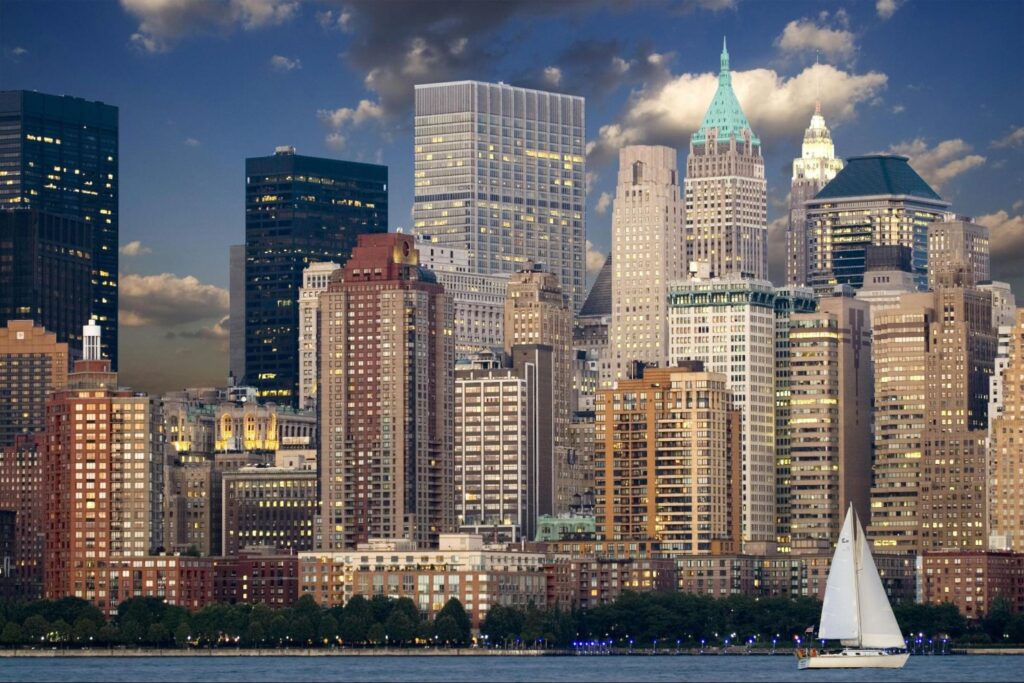Frosted glass is a popular choice for both residential and commercial spaces, offering privacy while still allowing natural light to filter through. There are two main options for achieving the frosted effect on glass: spray solutions and film solutions. In this article, we will explore the basics of frosted glass, delve into the details of spray and film solutions, compare the two options, and provide tips for choosing the right solution for your needs.
Understanding Frosted Glass
The Basics of Frosted Glass
Frosted glass, also known as etched glass, is created by applying a translucent finish to the surface of the glass, which diffuses light and obscures visibility. This creates a desired level of privacy without completely blocking out light, making it an ideal choice for areas such as bathrooms, conference rooms, and entryways.
One interesting aspect of frosted glass is the process by which it is created. Traditionally, frosted glass was made by sandblasting or acid etching the surface of the glass to create a rough texture that scatters light. However, modern techniques now also include the use of frosted films or coatings that achieve a similar effect with less labor-intensive methods.
Benefits of Using Frosted Glass
There are several benefits to using frosted glass in your space. Firstly, it provides an elegant and modern aesthetic, adding a touch of sophistication to any room. Secondly, it allows for the transmission of natural light while still maintaining privacy. This not only helps to create a bright and airy atmosphere but also reduces the need for artificial lighting, contributing to energy efficiency. Lastly, frosted glass can also be used as a decorative element, adding visual interest and enhancing the overall design of a space.
Moreover, frosted glass is versatile in its applications. Beyond its use in windows and doors, frosted glass can also be found in shower enclosures, partitions, shelving, and even furniture. Its ability to blend seamlessly with various design styles, from contemporary to traditional, makes it a popular choice among interior designers and architects looking to incorporate both functionality and style into their projects.
Exploring Spray Solutions
How Spray Solutions Work
Spray solutions for frosted glass involve applying a specially formulated spray directly onto the glass surface. This spray contains chemicals that create a frosted or etched effect when applied. The spray can be customized to achieve various levels of opacity, allowing for flexibility in design and privacy needs. Once applied, the spray dries and forms a durable finish on the glass.
One interesting aspect of spray solutions is that they offer a versatile way to add decorative elements to glass surfaces. Beyond just creating a frosted effect, some spray solutions can also be used to stencil patterns or designs onto the glass, adding a unique touch to windows, doors, or mirrors. This customization aspect allows for a wide range of creative possibilities, from simple geometric shapes to intricate motifs.
Pros and Cons of Spray Solutions
There are several advantages to using spray solutions for frosted glass. Firstly, they are a cost-effective option compared to other methods such as sandblasting or acid etching. Spray solutions are also relatively quick and easy to apply, making them suitable for both small and large-scale projects. However, it’s important to note that the effectiveness and durability of spray solutions may vary depending on the quality of the product used and the application process. Over time, the frosted effect created by spray solutions may also fade or wear off, requiring reapplication.
Another consideration when using spray solutions is the environmental impact of the chemicals involved. While some spray solutions are formulated to be more eco-friendly, others may contain harsh substances that can be harmful to the environment if not handled properly. It’s essential for users to follow safety guidelines and dispose of any leftover spray solution responsibly to minimize negative effects on the ecosystem.
Delving into Film Solutions
The Process of Applying Film Solutions
Film solutions for frosted glass involve applying a self-adhesive film directly onto the glass surface. The film is available in various designs, patterns, and levels of opacity, allowing for customization according to individual preferences and needs. Application of the film generally involves cleaning the glass surface, measuring and cutting the film to fit, and carefully applying it to the glass, ensuring that it is free from air bubbles.
When selecting a film solution for frosted glass, it’s essential to consider the intended purpose of the application. Some films are designed for privacy, blocking out unwanted views while still allowing light to filter through. Others may focus more on decorative elements, adding a touch of style to the glass surface. Understanding the specific requirements can help in choosing the most suitable film solution for the desired outcome.
Advantages and Disadvantages of Film Solutions
Film solutions offer several advantages when it comes to frosted glass. Firstly, they are a relatively affordable and easy-to-install option, making them suitable for both temporary and permanent applications. Film solutions also provide flexibility in terms of design and can be easily removed or replaced without leaving any residue on the glass surface. However, it’s important to note that over time, the adhesive on the film may weaken, leading to peeling or bubbling. Additionally, some film solutions may have limitations in terms of achieving a high level of opacity.
Another advantage of film solutions is their ability to act as a protective layer for the glass, helping to prevent scratches, UV damage, and even shattering in some cases. This added layer of security can be particularly beneficial in high-traffic areas or in households with children and pets. Despite these benefits, it’s crucial to follow proper maintenance guidelines to ensure the longevity of the film and the underlying glass surface.
Comparing Spray and Film Solutions
Cost Comparison
When comparing costs, spray solutions are generally more affordable than film solutions. The cost of a spray can or bottle is typically lower than the cost of frosted glass film, especially for larger projects. However, it’s important to consider the long-term durability and potential need for reapplication with spray solutions, which may incur additional costs.
It’s worth noting that while spray solutions may have a lower upfront cost, they may require more frequent reapplications compared to film solutions. This could potentially offset the initial savings over time, especially in high-traffic areas or environments where the frosted effect is subjected to more wear and tear.
Durability and Maintenance Comparison
In terms of durability, film solutions generally have a longer lifespan compared to spray solutions. Once applied, the film is more resistant to wear and tear and is less likely to fade or peel. Maintenance for both options is relatively low, requiring only regular cleaning with non-abrasive materials. However, in the case of film solutions, it’s important to avoid using harsh chemicals or abrasive scrubbers that may damage the film.
Additionally, film solutions offer UV protection, which can help prevent fading and discoloration over time. This feature is particularly beneficial for windows or glass surfaces that are exposed to direct sunlight for extended periods. On the other hand, spray solutions may not provide the same level of UV protection, making them more susceptible to color changes or degradation from sun exposure.
Aesthetic Differences
When it comes to aesthetics, both spray and film solutions can achieve a similar frosted effect. However, spray solutions offer more flexibility in terms of design options, allowing for custom patterns and textures to be created. Film solutions, on the other hand, offer a wide range of pre-designed patterns and textures, making it easier to achieve a specific look or style.
Moreover, film solutions can mimic the appearance of etched glass with intricate designs and detailed patterns, providing a high-end look without the cost of actual etching. This level of customization and sophistication may be desirable for applications where a more upscale aesthetic is desired, such as in office spaces or retail environments seeking to elevate their interior design.
Making the Right Choice for Your Needs
Considerations for Residential Use
When choosing between spray and film solutions for residential use, there are several factors to consider. Budget, desired level of privacy, and design preferences all play a role in making the right decision. If cost is a major concern, spray solutions may be the more affordable option. These solutions are not only cost-effective but also easy to apply, making them a popular choice among homeowners. However, if you are looking for a longer-lasting and more customizable solution, film solutions may be a better fit. Film solutions offer greater durability and a wider range of design options, allowing you to create a unique and personalized look for your home. Additionally, consider the level of opacity required, as film solutions may offer more options in this regard, allowing you to strike the perfect balance between privacy and natural light.
Considerations for Commercial Use
In commercial settings, different factors come into play when choosing between spray and film solutions. Durability, maintenance, and design consistency are key considerations for businesses. Film solutions are often preferred in commercial spaces due to their longer lifespan and ease of maintenance. These solutions are designed to withstand heavy use and are resistant to scratches and other forms of damage, making them ideal for high-traffic areas. Additionally, film solutions offer the advantage of easily replicating a consistent design across multiple areas. This is particularly beneficial for businesses that want to maintain a cohesive and professional look throughout their space. However, for smaller-scale projects or budget-conscious businesses, spray solutions may still be a viable option. These solutions provide a cost-effective way to achieve privacy and add a touch of elegance to any commercial space.
Tips for Choosing Between Spray and Film
- Identify your budget and prioritize cost considerations. This will help you narrow down your options and make a more informed decision.
- Determine the level of privacy required for your space. Consider factors such as the proximity of neighboring buildings or the need to block certain views.
- Consider your design preferences and the flexibility needed for customization. Think about whether you want a simple frosted look or if you have a specific pattern or design in mind.
- Research and compare different spray and film solution products. Look for reviews, testimonials, and samples to get a better understanding of the quality and performance of each option.
- Consult with professionals or seek advice from experienced individuals in the industry. They can provide valuable insights and recommendations based on their expertise.
By carefully considering these factors and following the tips provided, you can make an informed decision and select the right solution for your frosted glass needs. Whether you are a homeowner looking to enhance the privacy and aesthetics of your living space or a business owner aiming to create a professional and inviting environment, both spray and film solutions offer their own set of advantages and considerations. The choice between the two will ultimately depend on your specific requirements and preferences. So take your time, explore your options, and make a decision that will meet your needs for years to come.


